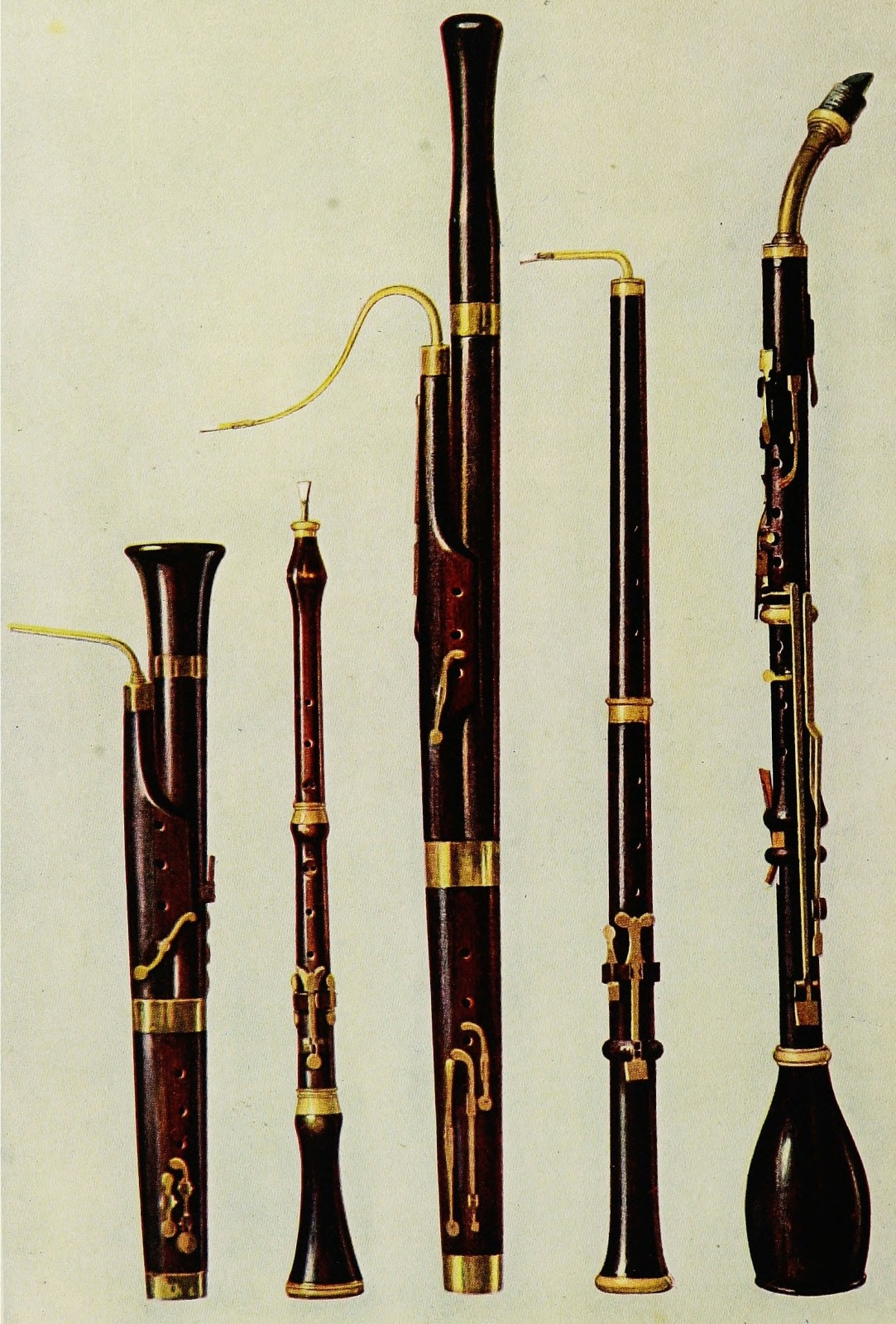
Almenräder left Schott to start his own factory along with partner J.A. Working at the Schott factory gave him the means to construct and test instruments according to these new designs, the results of which were published in Caecilia, Schott's house journal Almenräder continued publishing and building instruments until his death in 1843, and Ludwig van Beethoven himself requested one of the newly-made instruments after hearing of the papers. Almenräder's improvements to the bassoon began with an 1823 treatise in which he described ways of improving intonation, response, and technical ease of playing by means of augmenting and rearranging the keywork subsequent articles further developed his ideas. The design of the modern bassoon owes a great deal to the performer, teacher, and composer Carl Almenräder, who, assisted by the German acoustic researcher Gottfried Weber developed the 17-key bassoon whose range spanned four octaves. The Buffet system is played primarily in France but also in Belgium and parts of Latin America, while the Heckel system is played in the majority of the world. The modern bassoon exists in two distinct primary forms, the Buffet system and the Heckel system. Increased sophistication both in manufacturing techniques and acoustical knowledge made possible great improvements in the playability of the instrument. Increasing demands on the capabilities of instruments and players in the 1800s-particularly concert halls requiring louder tones and the rise of virtuoso composer-performers-spurred on the further refinement of the bassoon. Today, only thirty-three bassoons from that era survive. The early bassoon flourished in the Netherlands in the late 17th and early 18th century, with over half a dozen prominent woodwind makers developing the instrument. It was the Dutch maker Coenraad Rijkel whose addition of the G key for the little finger of the right hand, just after the turn of the 18th century, fixed the hand position to the current standard previously, the instrument could be played with either hand on top. A German painting, "Der Fagottspieler", in the Suermondt Museum, which scholars date to the end of the 17th century, depicts the bassoon much as it appears in its current form, and a three-keyed bassoon has been dated to 1699. The evolution of the early dulcian into the modern bassoon is also without precise record the dulcian continued to be used into the 18th century (and in Spain, into the early 20th). The English name of "bassoon" comes from a more general term referring to the bass register of any instrument, but after Henry Purcell's call for a "bassoon" in Dioclesian (1690) referring to the wooden double reed, the word began to be used to refer to this instrument in particular. (A dance also named "fagot" dates to a century earlier.) The instrument was constructed folded back on itself, as it is to this day (giving it the name in some regions "curtal", as it was shortened significantly).

The origin of this name is therefore a mystery. However, this etymology is incorrect: The term "fagotto" was in use for the bassoon before the word was used for "bundle of sticks" also, when the term first appeared, the resemblance did not exist, as the instrument at that time was carved out of one continuous block of wood (Jansen 1978). Some twentieth century musicologists believed that this instrument, resembling a bundle of sticks, was given the name meaning such, "fagotto", in 16th century Italy. The dulcian later evolved into the curtal, which featured separate joints like a modern bassoon, and gained an extra key.

However, there were only eight finger-holes and two keys. It was, like the modern instrument, frequently constructed of maple, with thick walls to allow finger-holes to be drilled obliquely, with its bell flared slightly at the end. The early dulcian had many similarities to the modern bassoon: though generally constructed of only a single piece of wood rather than sections, it too consisted of a conical bore that doubled back on itself at the bottom, with a curved metal crook leading from the instrument body to the reed. There were eventually eight members of the dulcian family of varying size, from soprano down to bass ranges. Scattered evidence exists for its creation at various places and times, and few early examples survive. Used and developed greatly in the 16th century to add a stronger bass to the wind band then consisting largely of shawms and recorders, the dulcian's origins are unknown. The bassoon was developed from its precursor, most often referred to as the dulcian, a wooden instrument all in one piece. Dulcians and racketts, from the Syntagma musicum by Michael Praetorius.


 0 kommentar(er)
0 kommentar(er)
